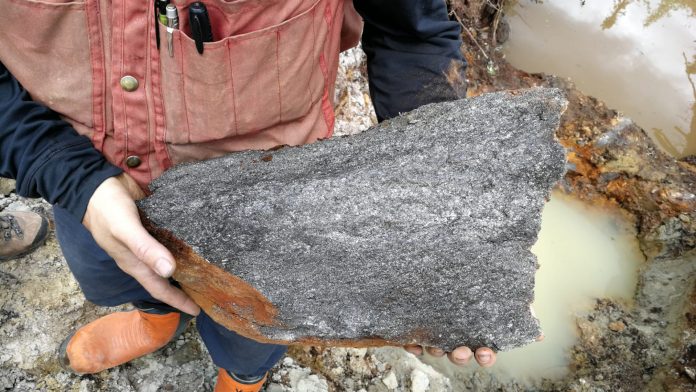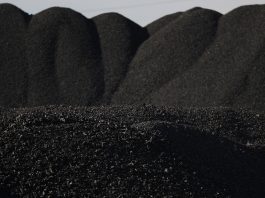James Cross, President and CEO of E-Power Resources (CSE:EPR), discusses why and how battery manufacturers can protect their graphite supply chain by acquiring graphite resources in the ground.
Electric vehicle (EV) battery manufacturers need to secure graphite resources while they are still in the ground. While they would love to find some already-mined graphite to enable them to reach their ambitious battery production goals, this will not be possible given the supply and demand situation. There is just not enough to go around, even if prices rise dramatically.
Large investment banks and governments have spent billions of dollars to fund the construction of so many battery manufacturing facilities. As an example, Northvolt, in Sweden and now Germany, Poland, Portugal and potentially Canada, has been funded with at least $7bn. In addition, Volkswagen just announced that it will build a 90-GwH factory in St Thomas, Ontario. It will be the largest factory of any kind in Canada and be capable of producing one million EV batteries per year. Volkswagen will spend up to C$7bn to construct it.
The Canadian Government agreed to make a C$700m grant, while the Ontario Government will make C$500m of direct investments. Both governments apparently hope to receive a return on this investment in additional revenues created by a factory employing thousands of people, producing one million EV batteries per year.
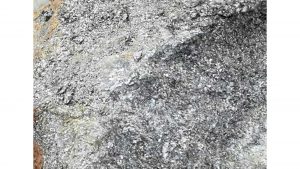
It is important to note that, if there are no graphite resources, no batteries will be produced, as graphite forms nearly the entire anode side of the battery. There are no known substitutes. Graphite is the perfect anode material because it is extremely heat resistant and conducts electricity very well. Graphite is the largest material component of EV batteries by weight but is often overlooked when talking about the EV battery supply chain.
When people hear about lithium-ion battery supply chains, the first thing that usually comes to mind is lithium. Lithium has its own supply issues, but most lithium comes from, and is found in, the West. This is not the case for graphite.
Given that the typical EV battery contains 50-100kg of graphite, these factories being constructed across North America and Europe are going to need a lot of it. How can a graphite supply chain be established?
The answer is obvious, but let us come back to that.
The graphite supply chain situation
According to World Mining Data, most natural graphite comes from China (roughly 63%), while China remains a net importer. Madagascar is next in the production rankings, with about 8% of global production in 2021, followed by Brazil, Mozambique, and India. Those five countries account for about 90% of global production. There are no producing graphite mines in the US and only one in Canada, which is very small and produces less than 1% of global production. Mexico is a tiny producer and only accounts for 0.15% of global production. These percentages are based on 2021 global production of approximately 1.167 million tonnes.
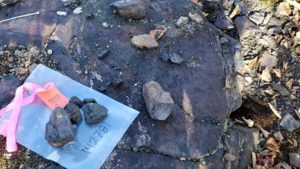
In Europe, the production situation for natural graphite is equally dismal. Russia produces about 1.5% of global supply and, at present, that supply source is politically unavailable to many countries. Ukraine, before the war, also produced about 1.5% of global production, while that now appears to be offline. Norway produces about 0.5%. Germany and Austria together produce less than 300 tonnes.
Essentially, North America and Europe have nearly no graphite supply chain, while this has not slowed the massive amount of funding going into building EV battery manufacturing facilities on both continents.
Largely because of the explosion in EV battery production capacity, demand for natural graphite is forecast by Benchmark Mineral Intelligence to grow from roughly 1.1m metric tonnes in 2021 to 7.2m metric tonnes in 2035, now less than 12 years away. In other words, natural graphite mining has to grow 6.5-fold by 2035 in order to fuel those factories. This means 97 new, world-class graphite mines are required globally by 2035.
Global sales of EVs in 2022 topped ten million, which is up tremendously from the six million in 2021. In 2023, this number is expected to be closer to 15 million. At 50-100kg of graphite per battery, you can imagine the requirements. Globally, there are at least 200 battery megafactories under construction, or planned. What happens when they all go shopping for graphite?
2023 is the year many analysts say demand will outstrip supply. The day battery manufacturers were hoping would never come is here. What can they do?
Will synthetic graphite help?
As graphite can also be made synthetically, can we not just make more? Synthetic graphite is used in EV batteries and can be made to perform very well. About half the graphite used by the EV battery industry is synthetic. It is added to the natural graphite to help with performance and probably to make up for production shortfalls in natural graphite.
The natural graphite most desirable for batteries is flake graphite. Amorphous, or fine graphite, is also used in EV batteries but is not the most desirable for performance. All three types of graphite, flake, amorphous and synthetic, will continue to be used in batteries, while Benchmark Mineral Intelligence estimates the natural component will rise and the synthetic component will fall. However, with the explosive growth of battery manufacturing, much more synthetic production capacity will still be required. The synthetic industry is having trouble keeping up with the growth of the battery industry.
It should also be noted that synthetic graphite is roughly four to ten times, depending on the information source, as expensive to produce as it is to pull natural graphite out of the ground. This is while EV manufacturers struggle to make EVs affordable to families for day-to-day mobility. This may have been ok whilst EVs were only meant for the rich and famous, but costs now need to be contained in order to achieve mass adoption.
To make synthetic graphite, one starts with petroleum coke, ironically a by-product of oil refineries, or coal tar. Extreme heat and pressure are then applied to create synthetic graphite. The extreme heat and pressure essentially simulate a metamorphic event. The environmental impact and energy requirements are huge, and with 50-100kg of graphite per battery, it is a lot of cooking. With natural graphite, nature has already done this work for us, turning other forms of carbon into graphite over millions of years.
Even with the synthetic component of EV batteries forecast to go down, synthetic battery production capacity has to increase from 2.1 million tonnes in 2022 to 5.2 million tonnes in 2035, according to Benchmark Mineral Intelligence, in order to keep up with the explosion in demand due to the EV industry.
Synthetic graphite resources will remain an important component of batteries, but the cost and environmental impact of making it means manufacturers are working to replace more of it with natural graphite, especially flake graphite. It cannot cost-effectively replace natural graphite and the production capacity is not there.
The synthetic graphite industry already produces more than the natural graphite industry. Synthetic production accounted for roughly 2.1 million metric tonnes, while natural graphite production was about 1.167 million metric tonnes. Bear in mind that a single EV battery has 50-100kg of graphite in it. It also generally takes twice as much graphite to make the anode material that goes into batteries. In other words, if the battery anode has 100kg of graphite in it, it took about 200kg of graphite to make that anode material.
What about recycling?
Graphite, as an anode material, cannot be recycled in the sense that metals can be recycled.
The solution
Here is the obvious solution to this problem battery manufacturers face in establishing a graphite supply chain: secure graphite resources in the ground.
The days of stockpiled graphite and easy access to above-ground supply are over. Manufacturers have to backwardly integrate to secure their supply chain, or risk being unable to produce batteries after being funded with billions of dollars. The numbers compelling them to do so are right in front of them. They should also act fast as there are not so many known graphite resources in the industrialised West.
If we look at North American battery manufacturing capacity, it is forecast to grow about ten-fold by 2026 over 2021 levels and, by 2031, 17-fold over 2021 levels. That implies 17 times more graphite will be required. In other words, get some now, before you cannot.
If you have spent billions to build a factory, is spending a few hundred million to secure an essential, yet endangered, link in your supply chain a good idea?
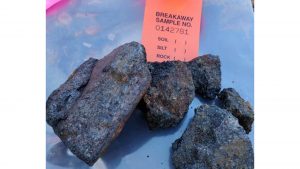
How do we secure graphite in the ground?
Sticking with North America, there are only a few known graphite resources of world-class size on the continent. You could start there. You can also partner with a company advancing its graphite project(s) toward a world-class sized resource estimate, or more than one.
Where should we secure graphite resources?
Far-flung graphite supply chains do not work very well in today’s world. Ideally, graphite will only be a few kilometres from the place where you will turn it into anode material and ultimately put it in a battery. That is not always practical, but you do not want to have to ship it around the world before you can put it into a battery. It should be as near as possible to the place where you will use it and, if it has to be far away, it should be on major routes of transport.
It does not help much if your graphite is in the high Arctic or somewhere else inaccessible. As it is a bulk material, you want it somewhere it will be easy to extract and ultimately bring to your factory. This means infrastructure.
You want to reduce the risk as much as possible that your graphite and your factory can be separated by politics. Ideally, you want it in the same country as your factory, or in one so close and friendly with the country where your factory is located that politics are unlikely to separate you from your graphite. A customs union and ease of movement between the two countries is also very helpful.
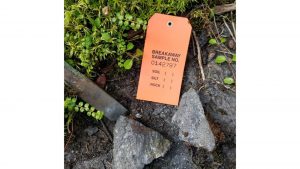
Final thoughts
The business of battery manufacturers depends on access to graphite. They have made huge investments to get into this business. They must backwardly integrate, by securing resources in the ground, in order to ensure their graphite supply chain and get a return on the capital already allocated. The cost of this ‘insurance’ is generally a small fraction of what they have already invested.
About E-Power Resources
E-Power Resources (CSE:EPR) is an exploration and development company engaged principally in the acquisition, exploration and development of graphite properties. We are here to discover and develop conveniently located, world-class sources of graphite for the North American and West European EV industries. Our flagship asset, the Tetepisca Graphite Property, is located in the Tetepisca Graphite District of the North Shore Region of Québec, approximately 215km from the Port of Baie-Comeau.
Please note, this article will also appear in the fifteenth edition of our quarterly publication.

